'Poacher' real story: A pineapple farm murder that led sleuths to the kingpin behind the ivory trade racket - Part 2

Mail This Article
After the arrests of many linked to the large-scale elephant poaching unleashed by the Ivory mafia, authorities got hold of vital information from confessions. This led to an increase in the number of accused in the case. After crossing Kerala, Delhi and Kolkata, the footprints of the culprits extended to Nepal and Japan. How did Kerala catch all the accused in the ivory case that shocked the state before the CBI came into play?
All the conduits of the Ivory mafia involved in the poaching case in Kerala were in custody, though vital information on who were the buyers of the priceless tusks was yet to be cracked. Information gathered from the accused after their arrests led the probe team to overseas hangouts of ivory traders. The extensive network spanned from Kerala’s dense forests to international smuggling hubs of ivory. It became clear that a gang based in Kolkatta, which even had a woman, had bought the tusks from the poachers. This was a turning point in the investigation.
Murder at a pineapple farm
The probe team had the assistance of the Wildlife Crime Bureau. A Kolkata-based woman and a Delhi native were the conduits in the ivory trade, it was known by then. The horn was transported from Kolkata to Nepal via Siliguri and Darjeeling. Ivory trading is not illegal in Nepal. So the information received by the Forest Department was that Nepal was the gateway to the international markets for ivory, including Japan. But if the probe has to traverse through this route, nearly 200 arrests would have to be made.
In between, investigators were shocked by the death of the main accused AikaramatamVasu, who was on the run after the authorities began the manhunt. Fifty-two-year-old Vasu’s body was found on a pineapple farm in Sindudurg district of Maharashtra just before the search team was about to issue a lookout notice for him. A suicide note found near the body charged that he was taking the extreme step due to the case by the forest department and that his sister, brother-in-law and their child were innocent. Though initial reports suggested it was a suicide, the incident is still shrouded in mystery.
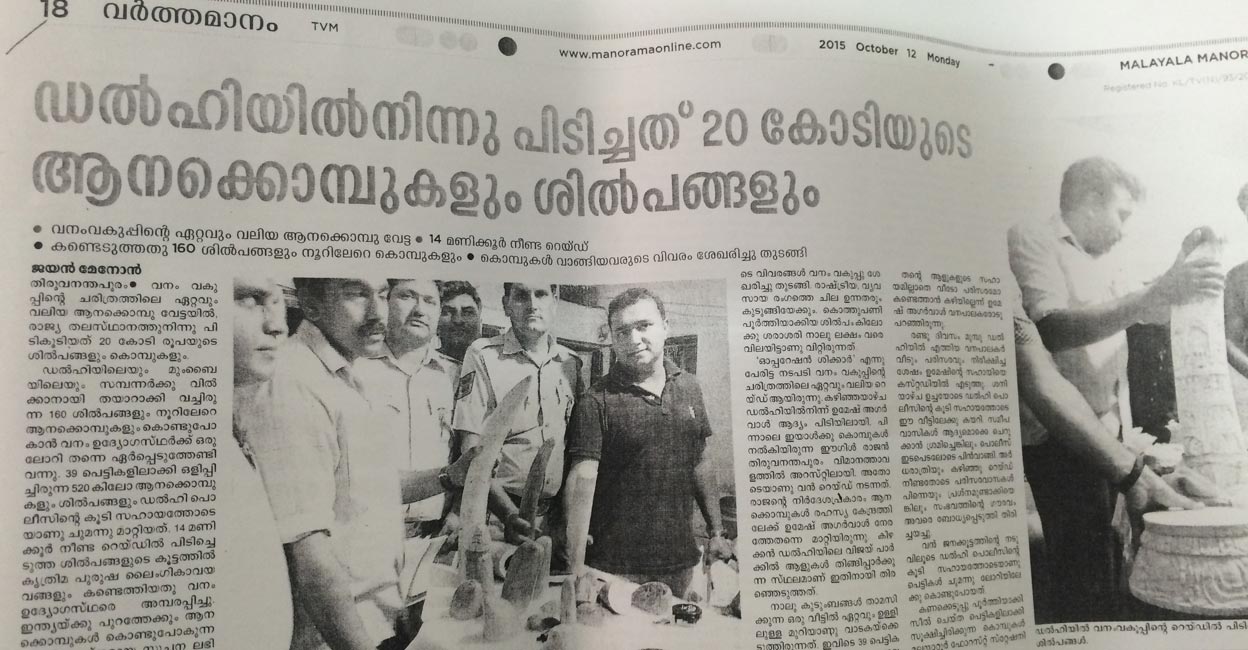
Vasu had spoken to his relative, who was in the custody of the forest department, on the phone. Vasu had said that he was returning home on a bike taxi he had arranged. Vasu died after proceeding about 25 km from the plantation. Vasu, who usually wears jeans and shoes, was wearing a lungi. A gun, which was found in the vicinity, was not Vasu's, says Sivakumar, who played a vital role in unearthing the case.
Even after learning about Vasu's death, forest department officials continued to keep an eye on railway stations from Kasaragod, as if the deceased was about to land there on Netravati Express. We don't understand why,'' says Sivakumar. Vasu's body was found hanging from a cashew branch at a pineapple plantation at Dodamarg on the Maharashtra-Goa border, which was owned by Manoj, a Perumbavoor native.
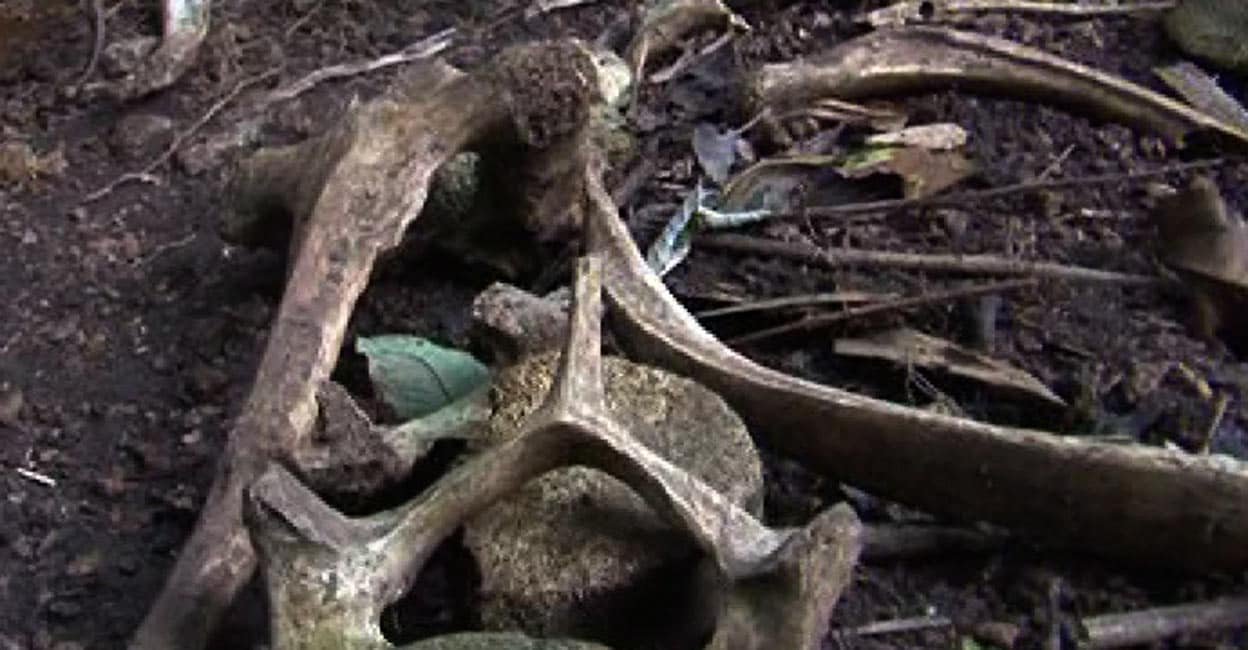
While fleeing from forest officials, Vasu had entered Maharashtra nearly 15 days ago, as per Manoj’s version. He told the forest officials that he gave Vasu a job on the plantation as his friend had introduced the latter to him.
Manoj did not know Vasu was involved in any case. It was only when Vasu's picture appeared in newspapers that Manoj came to know his criminal antecedents. On the same day, Manoj then informed the DFO of Malayatoor that Vasu was on his plantation. Vasu was contacted by Forest department officials on a Saturday evening and was asked to come back home. But workers informed Manoj that Vasu was found dead on Sunday afternoon.

Eldos surrenders
Eldos was second in command in the poaching gang after Vasu. When he was cornered by sleuths and was about to be caught, Eldos surrendered at the Kothamangalam court. The investigation team took Eldos to the forests and found the remains of two more elephants. Eldos also showed them the carcass of a wild buffalo that they had hunted. Eldos was taken to the forest through Karimbani Forest Station. Two of the remains were found in the Vilangupara area, where the poachers had stayed many times.
Meanwhile, the simmering infighting and feuds within the forest department came to the fore after reports started appearing about the poaching in Edamalayar. The Forest Protective Staff Association alleged that department officials were trying to sabotage the investigation. Thiruvanchoor Radhakrishnan also slammed the department chief and said the latter did not have any clue about the progress of the investigation. Vigilance Additional PCCF Surendra Kumar also wrote to the Forest Secretary against the department chief alleging that the probe was being sabotaged and the Vigilance was not allowed to function independently.
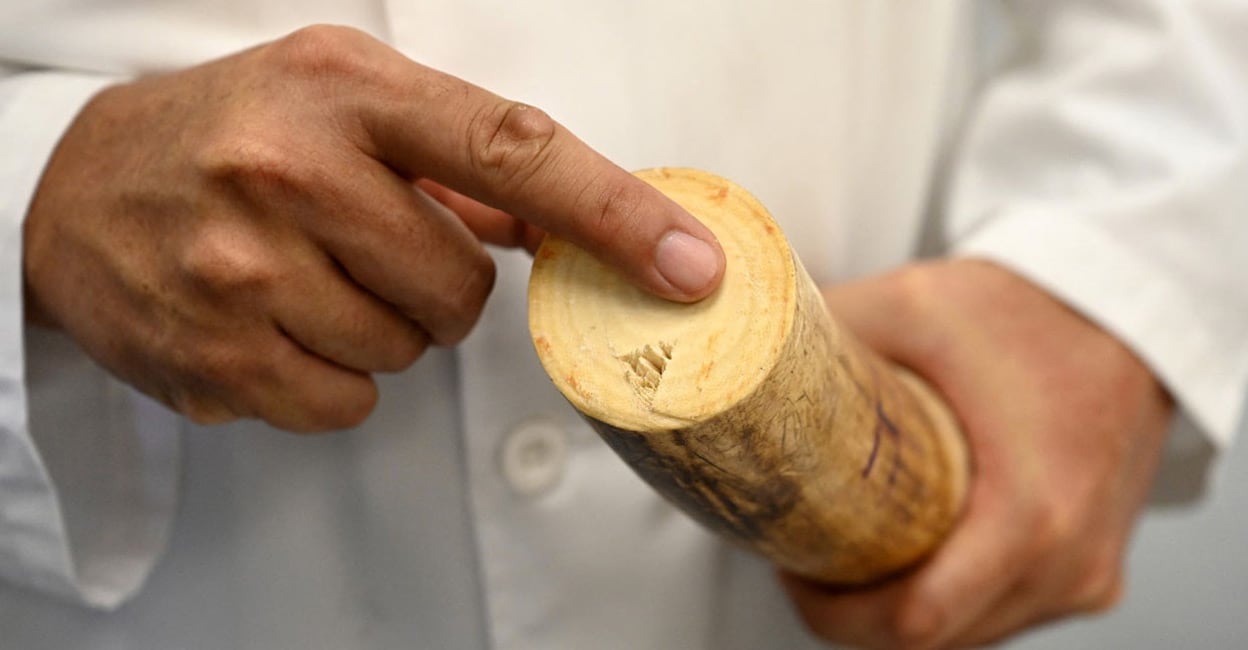
The minister’s response to this development was that there were some differences of opinion among top officials. The Forest Protective Staff Association charged that the investigation has been made a mockery due to the feud between top officials and urged the government to take steps to restore the lost glory of the department.
CBI takes over
In August, the Forest minister recommended a CBI probe and it was accepted by the CM and the home minister. It was decided to hand over the case as it had links to other states and even cross-border connections were involved. But the CBI could not find anything more than what the Forest Department already found out. Nearly 19 cases linked to this are being heard in various courts. Kunjumon, who was made a pardoned prosecution witness, died a year and a half ago.
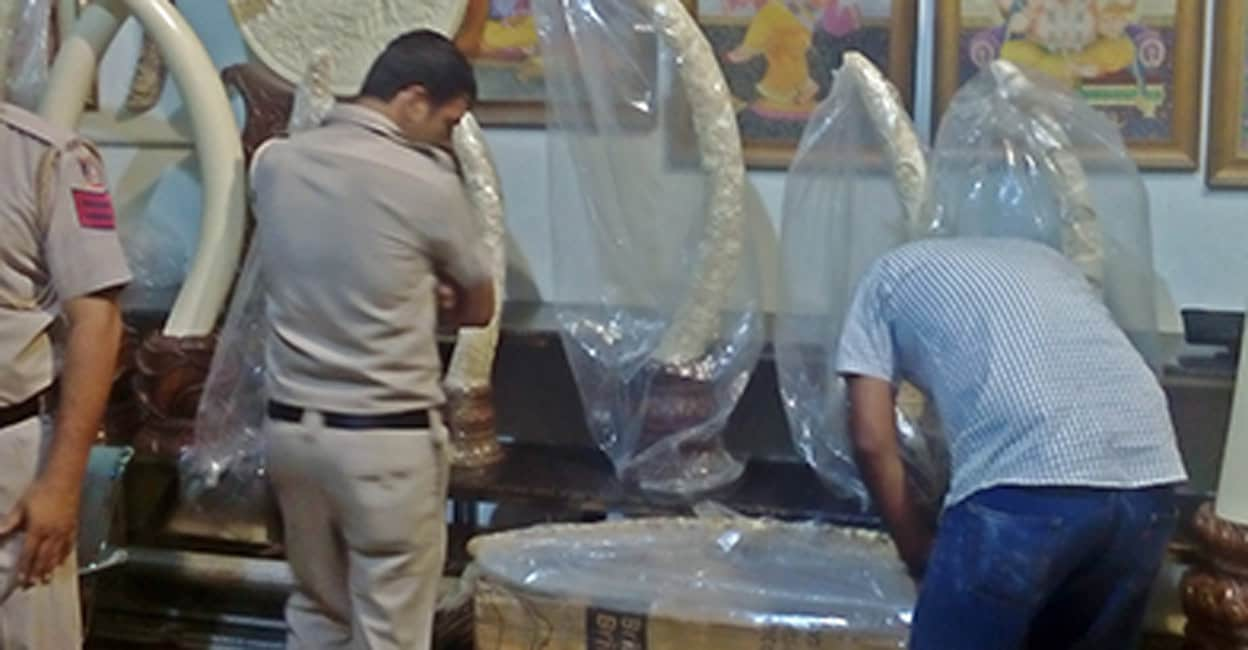
A sensational ivory poaching case that would have been closed with a farcical arrest of a cook by complicit officials, gathered national attention due to the timely intervention of an honest Forest Department, which was then given wide coverage by the media. It led to the arrests of 73 culprits and poaching of Ivory worth Rs 25 crore was unearthed. The accused mentioned in his diary that the illicit ivory trade was done by big shots in Kolkata, Delhi and Mumbai and also had their phone numbers. A woman was heading the Kolkata group and a Keralite was at the helm of the Ivory trade racket in Delhi. Details of three money transactions amounting to Rs 25 lakh, Rs 15 lakh and Rs 10 lakh were also recorded in the diary.
Kingpin nabbed
Umesh Agarwal, who hails from Delhi and was masterbrain in the ivory trade, was arrested as part of the investigation code-named 'Operation Shikar'. Agarwal was arrested from a four-storey house in Priyadarshini Nagar in the national capital's tony neighbourhood of Shakarpur by a team of Kerala forest rangers, the Wildlife Crime Control Bureau and Delhi Police. Within 24 hours, Agarwal was brought to the Muvattupuzha court and remanded.
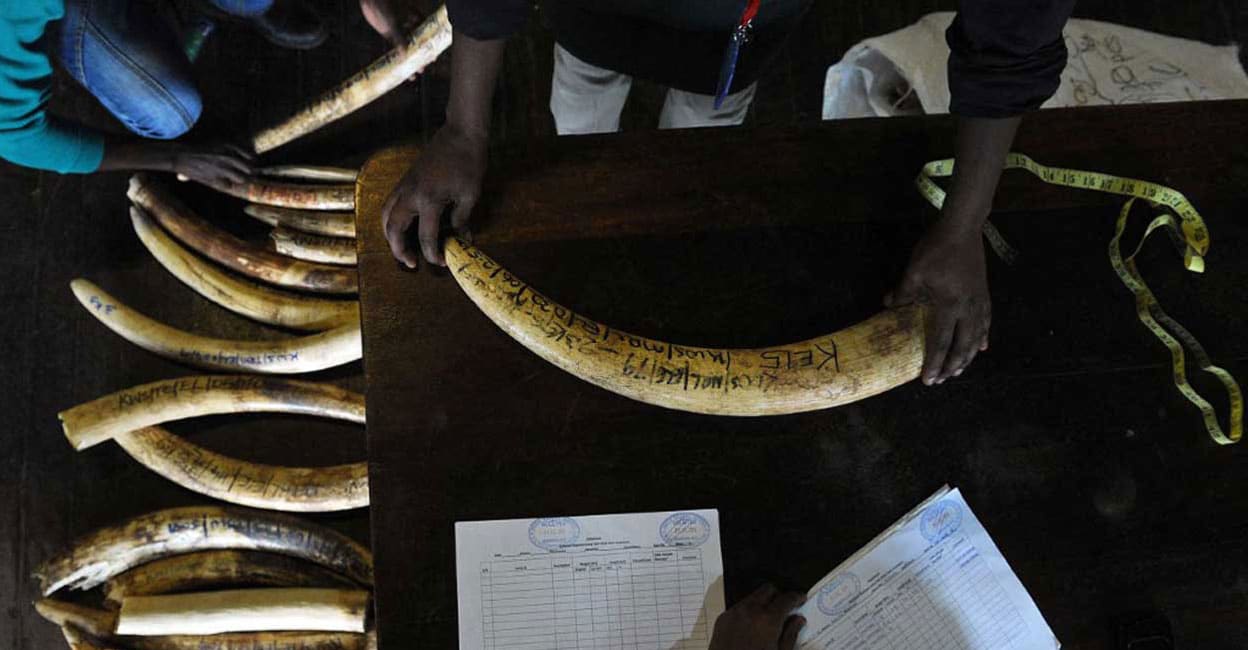
The crucial arrest came just ahead of the CBI informing of its consent to investigate the elephant poaching case. The probe team swooped in on Agarwal by following leads on the mobile phones of Aji Bright, Priston and Eagle Rajan, who were all arrested from Thiruvananthapuram. Agarwal bought elephant horns from them and was trading them to wealthy clients in Japan, China and Nepal. The team had kept Agarwal’s residence on surveillance for four days before arresting him.
Agarwal, who was running an ‘ underground workshop’ to facilitate his ivory trade, admitted he had been trading in ivory since 1990. But that was the first time that he was caught. Umesh, who claimed that he had the license to carry out the ivory trade, confessed he bought horns of captive elephants from Rajan and Aji but said that he did not know that he was procuring horns of wild elephants.
Modus operand
The modus operandi of the ivory trade racket run by Agarwal was that of clients who sought Kerala model ivory sculptures, which were manufactured in Thiruvananthapuram hide-outs mentioned earlier. If the orders were for Mughal-type sculptures, the ivory would be transported to Agarwal’s underground workshop in Delhi, where the sculptures were made. The ivory sculptures, disguised as wooden ones, were then shipped to Nepal, China and Japan.

